Boost your mobility with this eight-move chair yoga for seniors routine
This beginner-friendly session helps improve flexibility, posture, and boost your wellbeing, and all you need is a chair
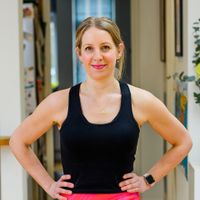

Chair yoga for seniors is an effective way to stretch and strengthen the body as you age. Staying supple and flexible is an important element of active ageing because it helps us perform daily tasks without pain or discomfort.
And if you've never done a yoga class, that's okay! You don't need a yoga mat or other equipment, just a chair and a bit of time to strengthen your mind-muscle connection, focus on the present moment, and stretch out your muscles.
Having a strong body can also reduce the risk of injury and falls, explains yoga instructor Aysha Bell. And while you might think that boosting your mobility requires a lot of time, with the right exercises, all you need is your own bodyweight to target all the major muscle groups.
To get you started, Bell designed an eight-move routine you can do whenever you have a spare moment and has explained how to do each stretch, tips on where you should feel the effects, and how each one benefits your body.
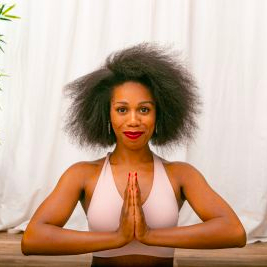
Aysha Bell is a yoga teacher based in the U.K. who guides individuals through physical and mental exercises to promote well-being and mindfulness. She also serves as a meditation facilitator, helping people connect with their inner selves and achieve a state of calm and clarity.
Aysha Bell's eight-move chair yoga for seniors routine
“This sequence is beginner friendly, and has multiple benefits for older people, from improved posture, flexibility, and mobility as well as relieving stress and improving circulation," explains Bell.
She has designed this short eight-move chair yoga for seniors routine to help you stay fit, mobile, and able to do everyday tasks as you age. All you need is a chair, a bit of space, and some time to focus on your body.
If you don't have a chair, you can sit on a bench or couch—just make sure your back is straight and your hips are at 90 degrees to keep your posture correct and avoid any lower back pain.
Start your week with achievable workout ideas, health tips and wellbeing advice in your inbox.
1. Seated neck stretches
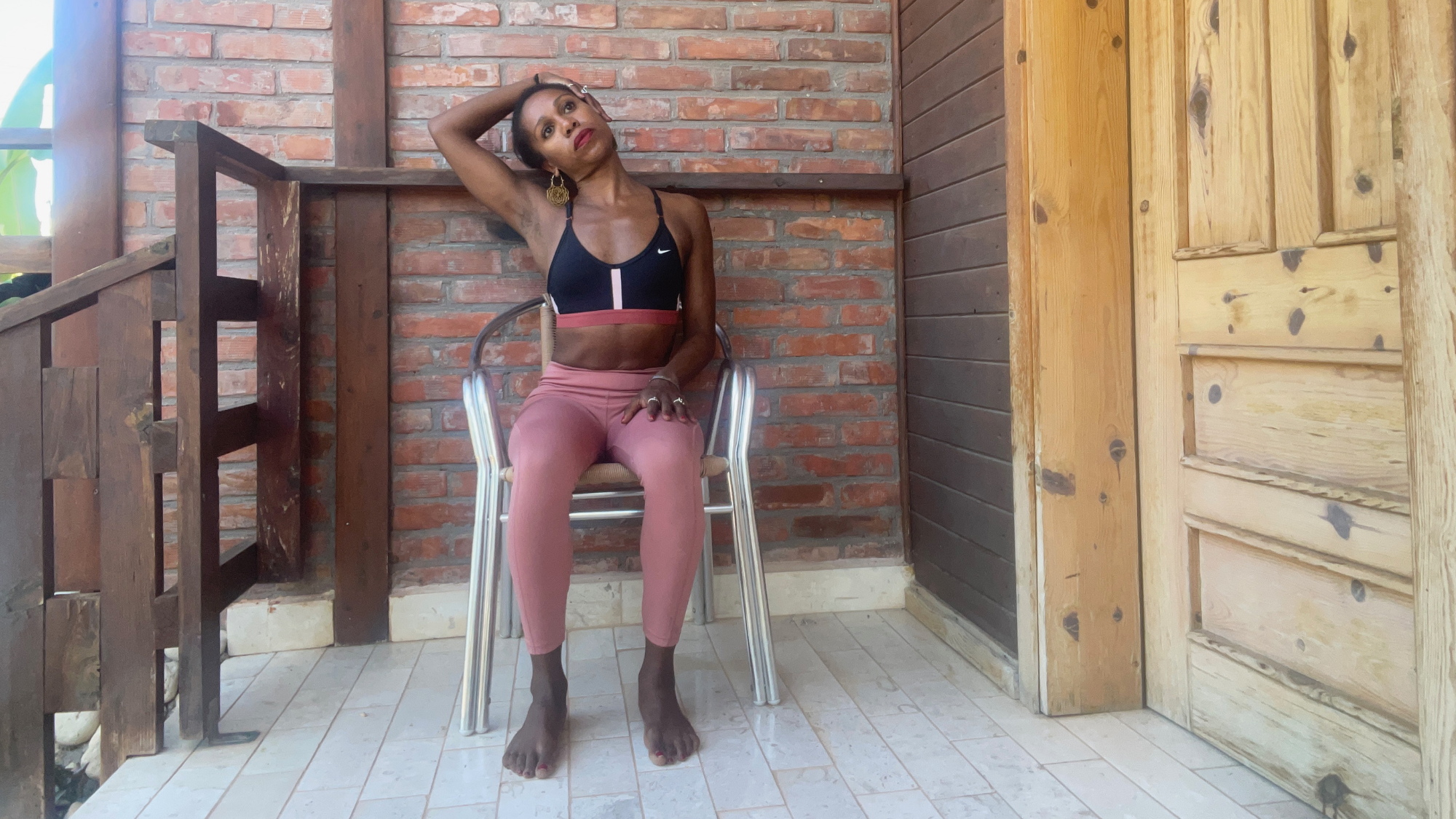
According to Bell, "this move is ideal for older people as it relieves tension in the neck and shoulders, improves flexibility, and helps reduce stiffness.”
- Sit comfortably on the edge of the chair with your spine upright.
- Gently drop your right ear towards your right shoulder, feeling a stretch on the left side of your neck.
- Hold for a few breaths, then switch sides and repeat. Continue alternating sides for 4-6 repetitions.
2. Seated mountain pose
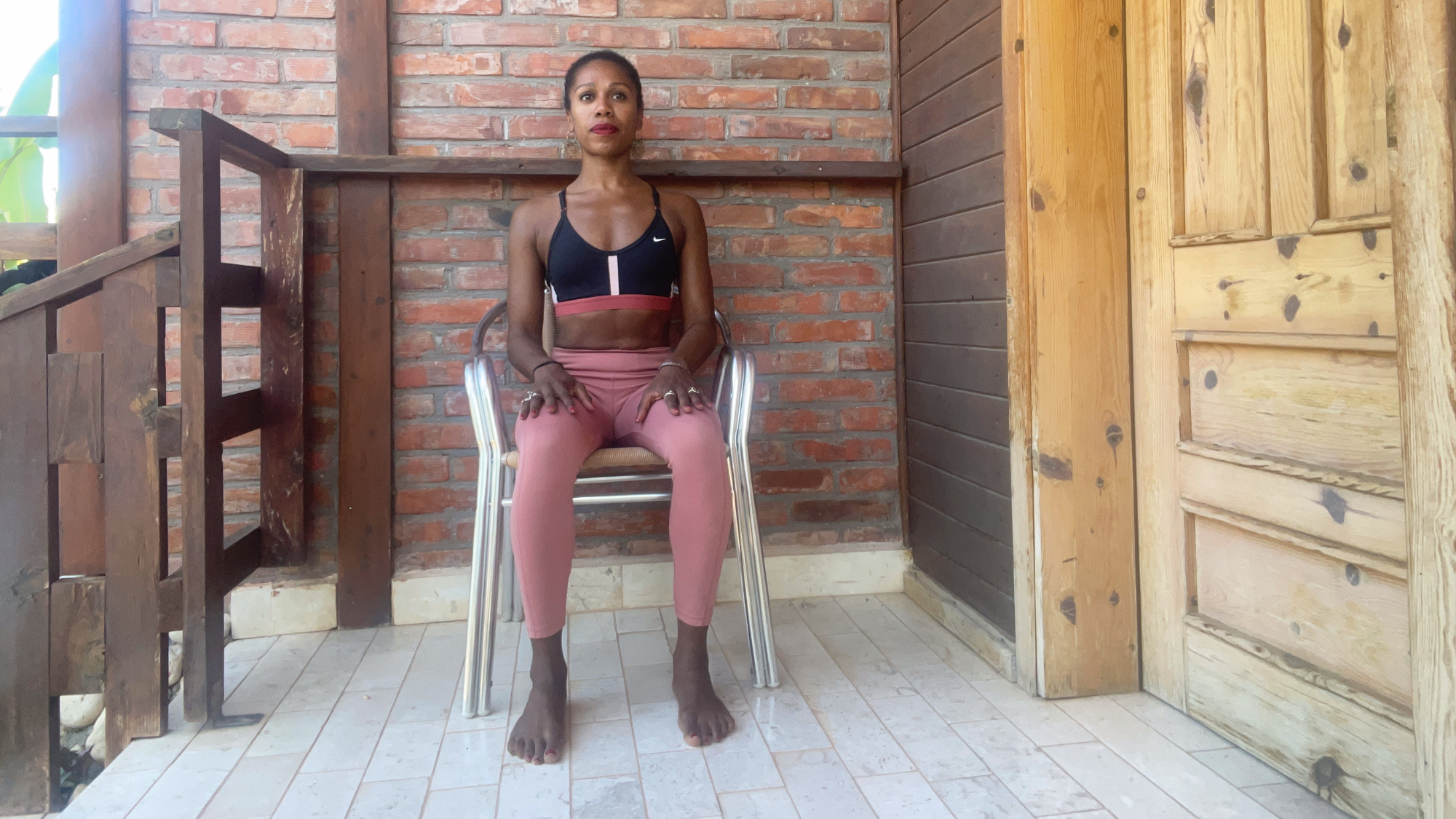
“This move helps improve posture, promotes a sense of grounding and stability, and calms the mind,” says Bell.
- Sit comfortably on the chair with your feet flat on the floor and your back straight. Rest your hands on your thighs or place them gently on your knees.
- Close your eyes and take slow, deep breaths, focusing on lengthening your spine and relaxing your body.
- Extend your right arm overhead and gently reach towards the left side, while keeping your left hand on the side of the chair for support and stability. Keep the stretch within a comfortable range of motion, without any strain or discomfort.
- Hold the stretch for a few breaths, feeling a gentle lengthening along the right side of your body.
- Slowly come back to an upright position and repeat on the other side, extending your left arm overhead and reaching towards the right side.
3. Seated side stretch (left and right)
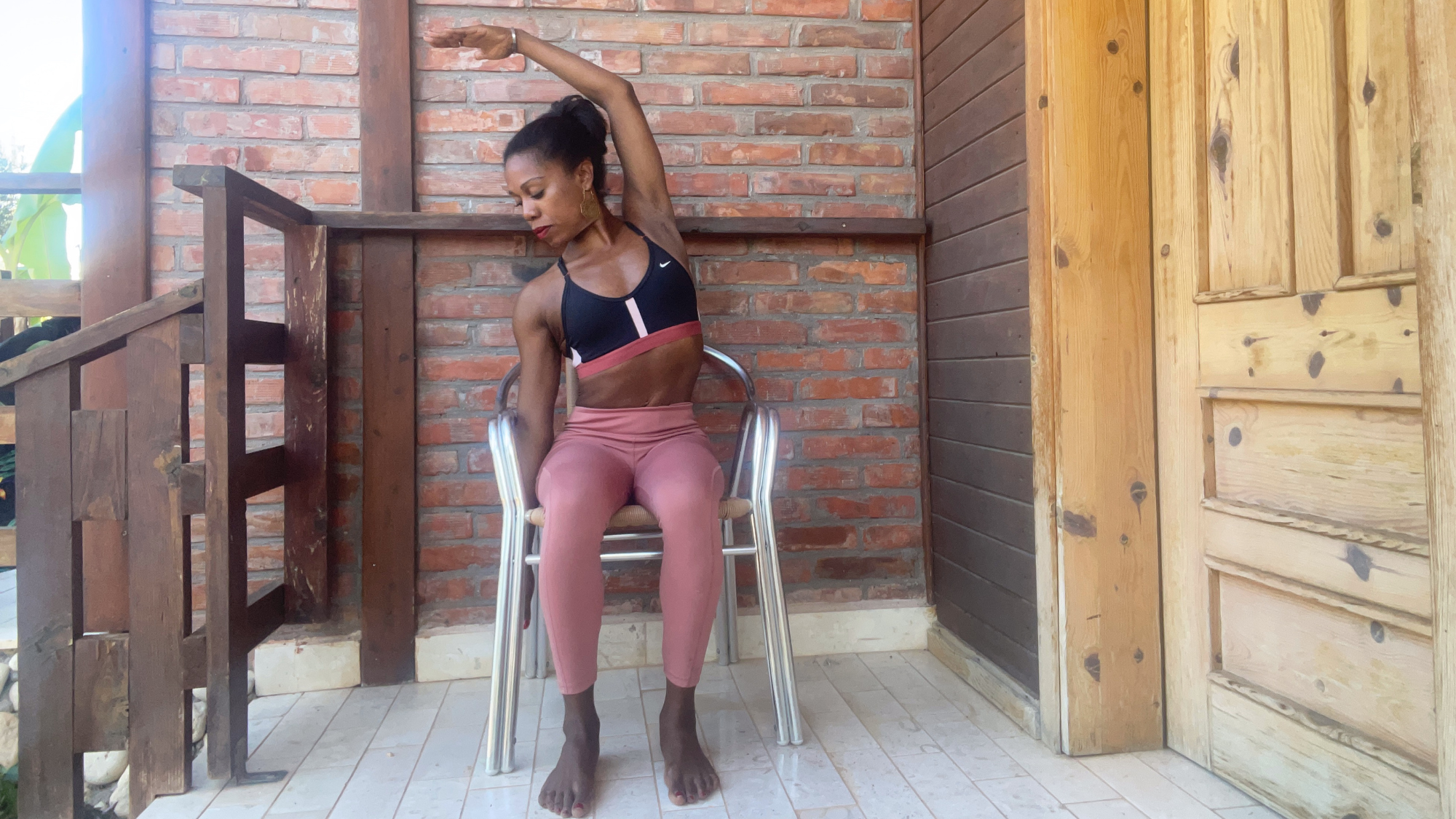
Bell says: “This move stretches the muscles along the sides of the body, including the intercostal muscles and obliques, promoting flexibility and mobility. It also helps improve posture and spinal alignment, reducing the risk of postural imbalances."
She also notes that it increases circulation and blood flow to your upper-body, which can help with stiffness and tension. Plus, it "enhances breath awareness and deep breathing, improving respiratory function and lung capacity."
- Sit upright on the chair with your feet flat on the floor and a straight back. Extend your right arm overhead and gently reach towards the left side, while keeping your left hand on the side of the chair for support and stability.
- Hold the stretch for a few breaths, feeling a gentle lengthening along the right side of your body. Keep the stretch within a comfortable range of motion, there should be no strain or discomfort.
- Slowly come back to an upright position and repeat on the other side, extending your left arm overhead and reaching towards the right side.
4. Seated spinal twist
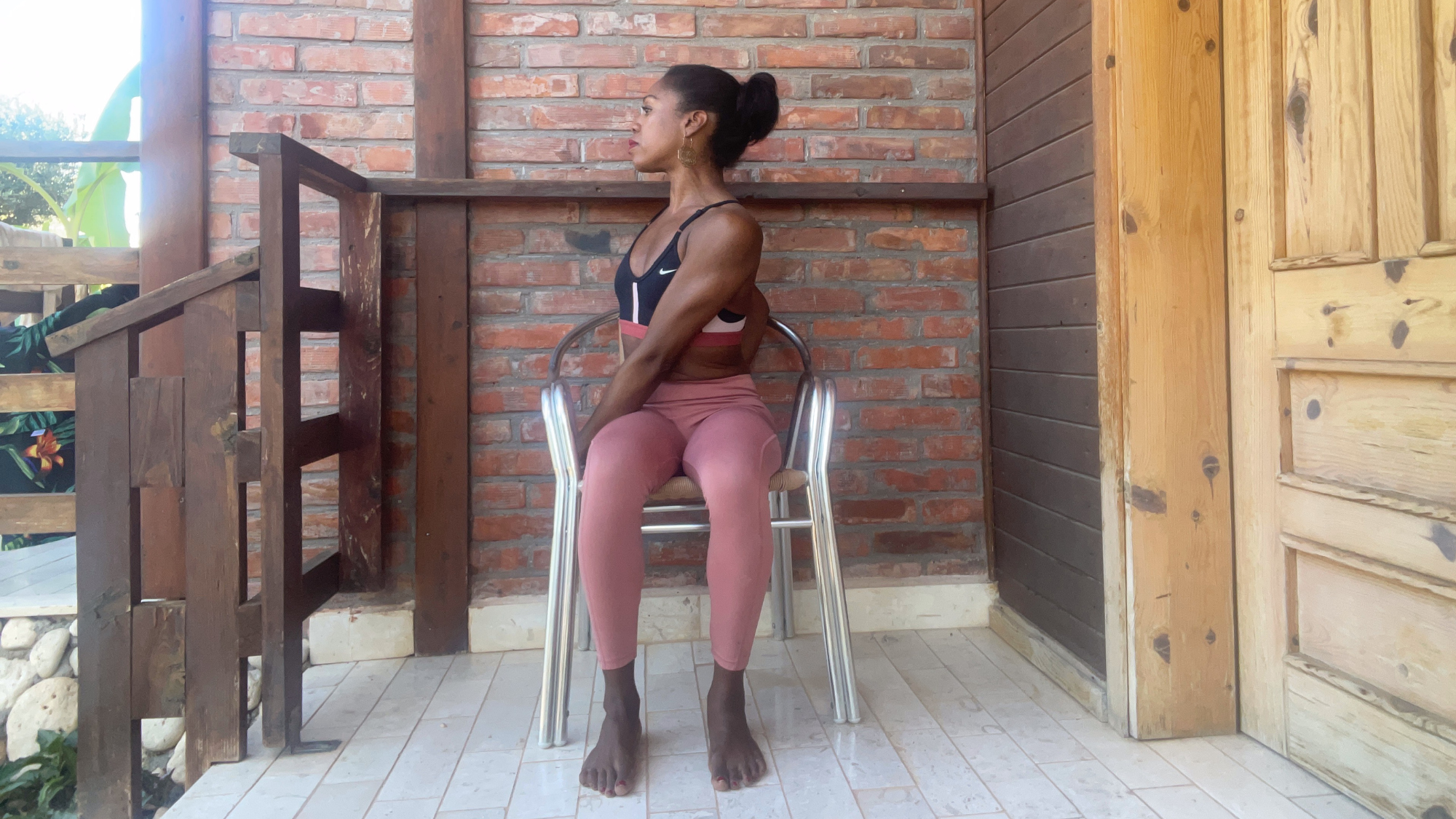
“This move is good for us as we age because it increases spinal mobility, improves digestion, massages internal organs, and relieves tension in the back and hips,” says Bell.
- Sit sideways on the chair, with your right side close to the backrest. Place your right hand on the backrest and hold the side of the chair with your left hand.
- Inhale, lengthen your spine, and exhale as you gently twist to the right, looking over your right shoulder.
- Hold the twist for a few breaths, then repeat on the other side.
- Do 2-3 repetitions on each side.
5. Seated cat-cow stretch
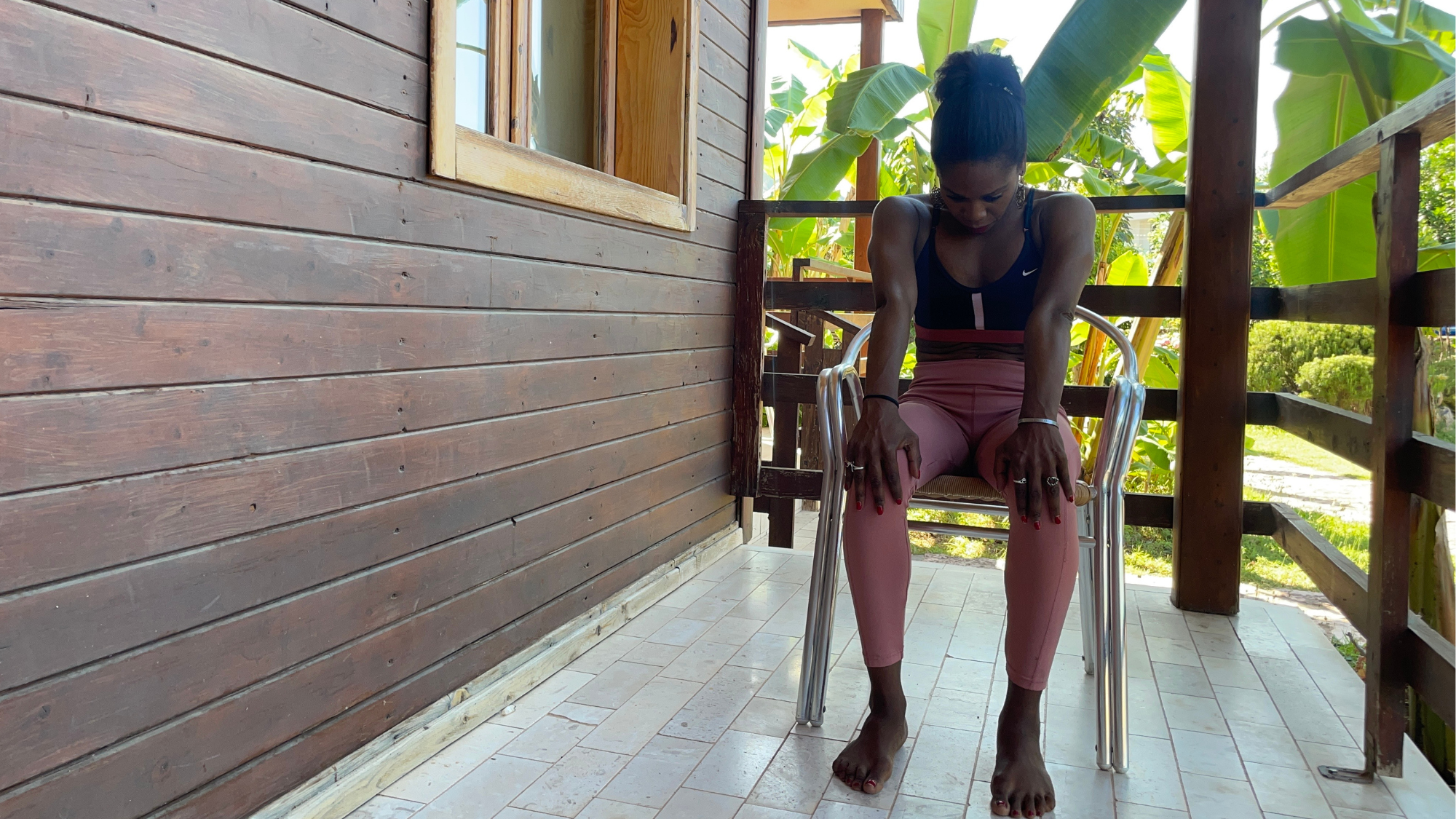
Bell says: “This move increases flexibility and mobility in the spine, massages the organs in the abdomen, improves digestion, and promotes good posture.”
- Sit with your feet flat on the floor and hands resting on your thighs.
- Inhale, arch your back, and lift your chest, allowing your shoulder blades to come together (cow pose).
- Exhale, round your spine, and tuck your chin towards your chest, drawing your belly button in (cat pose).
- Repeat the cat-cow sequence for 6-8 breaths, moving with the breath.
6. Seated modified pigeon pose
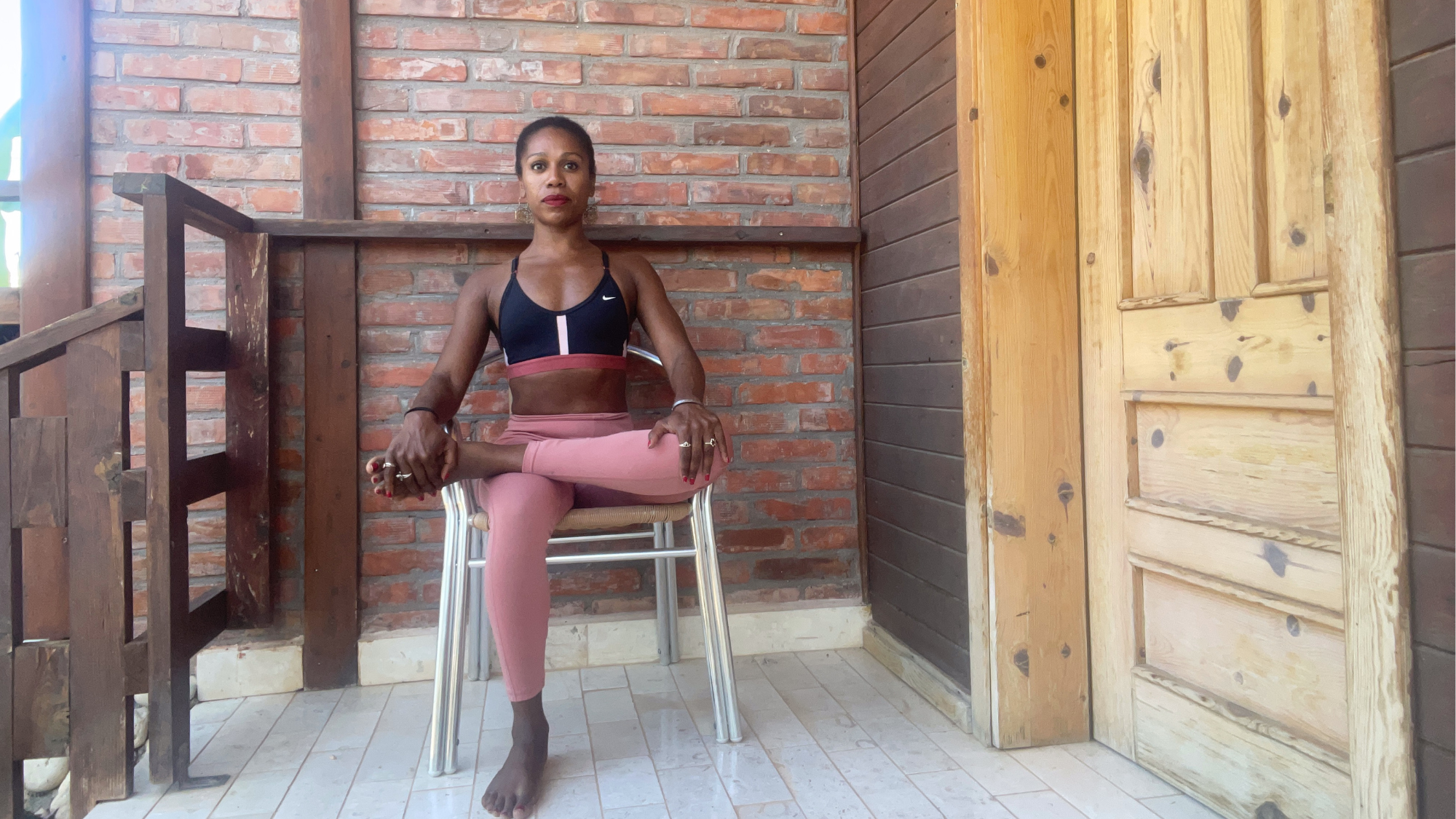
“This move is great for active aging as it provides a gentle release for the hip rotator muscles, reducing stiffness and improving range of motion. And it promotes better posture and alignment by opening up the hips and lengthening the spine.
"It is also good for people with reduced mobility as it can also help alleviate discomfort associated with tight hips, lower back pain, and sciatica, while boosting circulation in the hip area, which can support overall hip joint health," explains Bell.
- Sit comfortably on the chair with your feet flat on the floor and your back straight. Lift your right foot off the floor and place your right ankle on your left thigh, just above the knee. Flex your right foot to protect the knee.
- Gently press your right hand on the right thigh, guiding it downward to deepen the stretch if it feels comfortable. If you feel a sufficient stretch in the right hip, you can stay in this position. Otherwise, you can lean slightly forward from the hips to increase the stretch.
- Hold the position for a few breaths, focusing on relaxing into the stretch without any pain or discomfort.
- Slowly release the pose and switch sides, placing your left ankle on your right thigh and repeating the stretch on the other side.
7. Seated eagle chair pose
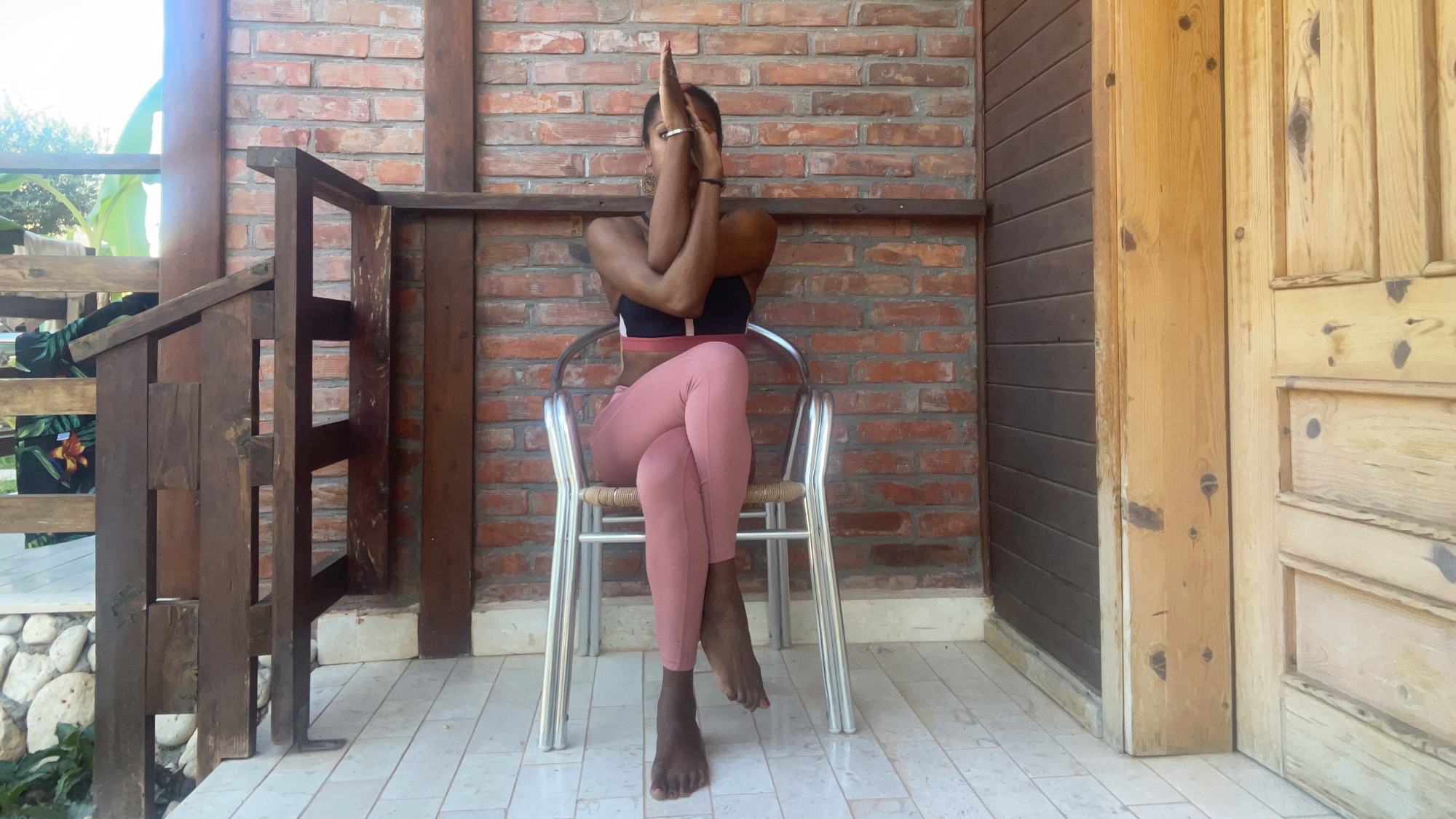
Bell explains that this stretch "improves balance and focus, which helps maintain stability and prevent falls.
"It also stretches the muscles between the shoulder blades, relieving tension in the upper back and also opens up the shoulders and improves mobility in the shoulder joints."
- Sit comfortably on the chair with your feet flat on the floor and your back straight. Lift your right leg and cross it over your left leg, bringing your right thigh on top of your left thigh. Flex your right foot to protect the ankle.
- If it's accessible, wrap your right foot behind your left calf. If that's challenging, you can rest the toes on the floor beside your left foot.
- Extend your arms forward at shoulder height and cross your right arm over your left arm. Bend your elbows and bring your palms together, or if that's difficult, bring the back of your hands together.
- Relax your shoulders away from your ears and keep your chest lifted. Hold the pose for a few breaths, focusing on your balance and the stretch in your upper back and shoulders.
- Release the pose and switch sides, crossing your left leg over your right leg and your left arm over your right arm.
8. Seated forward fold

“This final move stretches the hamstrings, calves, and lower back, increases blood circulation to the brain, calms the mind, and reduces anxiety and stress," says Bell.
- Sit on the chair with your feet flat on the floor, hip-width apart.
- Inhale, lengthen your spine, and as you exhale, slowly hinge forward from your hips, reaching your hands towards your feet or the floor.
- Let your head and neck relax. Hold the forward fold for 4-6 breaths, then slowly come back up to a seated position.
You don't have to do this routine every day—although it is fine to do that—but making it a regular part of your week means you'll quickly start to see the benefits of regular stretches, alongside improved mobility and flexibility.
If you noticed positive changes and want to develop your yoga practice, you have a few options. These yoga stretches for beginners are a great place to start and can also boost your flexibility without equipment.
Alternatively, this yoga for over 50s routine is designed to support your body with restorative poses you can do whenever you have a spare movement. Whichever you choose, you'll begin to see the benefits of yoga with some regular practice.
Maddy Biddulph is a journalist specializing in fitness, health and wellbeing content, with 26 years in consumer media working as a writer and editor for some of the bestselling newspapers, magazines and websites in the US and UK, including Marie Claire, The Sunday Times and Women’s Health UK.
She is a CIMPSA-certified PT and works one-on-one with clients, as well as running Circuits Club classes which mixes cardio and strength training and chair-based exercise classes for seniors.
